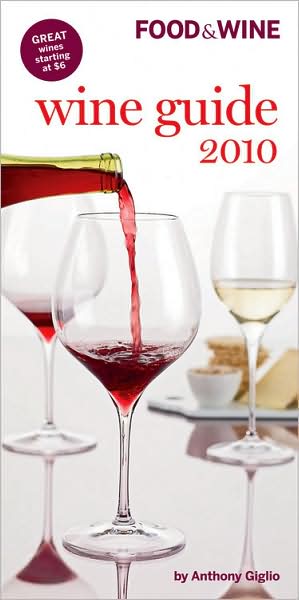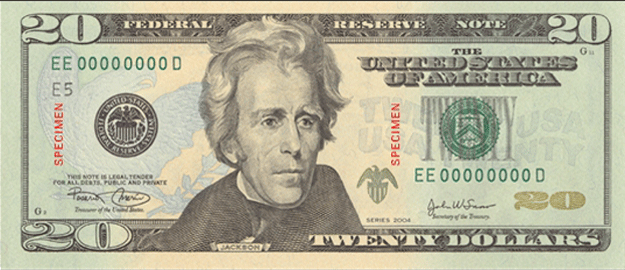 I picked up the Food & Wine Wine Guide 2010
I picked up the Food & Wine Wine Guide 2010 the other day. I’ve always enjoyed these guides and have picked them up every other year or so. For each major region they provide an overview of the style of wines produced along with recommended wines and tasting notes. It’s necessarily general given that it’s trying to cover so many regions and remain a “pocket” guide, but it’s a good browsing book. In fact I used to keep one in my car and would glance at it when stopped at red lights! (I like Oz Clarke’s pocket guides, too.)
But the reason I’m posting about it today is the way the guide handles price categories. Each wine noted in the guide (and remember they’re all recommended wines) is labeled to indicate quality and price. The 2010 guide uses the following categories:
QUALITY
★★★★ OUTSTANDING Worth a search
★★★ EXCELLENT Top-notch of its type
★★ VERY GOOD Distinctive
★ GOOD Delicious everyday wine
PRICE
$$$$ OVER $60
$$$ $31 to $60
$$ $21 to 30
$ $20 and under
So what surprised me about this is the bottom price range. $20 and under is the starting point now? I don’t know about you, but I do the bulk of my wine buying in that range. In fact, I’d say $15 is my usual threshold for everyday wine. So for me, and I suspect most wine buyers, lumping $20 bottles in with $10-12 bottles isn’t very helpful. I should reiterate here that they do not provide a specific price for each wine; they only indicate if it’s $ or $$ or $$$ or $$$$.
I think this is especially puzzling given that at the beginning of the guide, in a section called “The Year in Wine”, they highlight the trend toward bargain wines:
Demand for wines priced over $50 dropped precipitously … while bottles priced at $10 or less soared in popularity – accounting for fully 66 percent of the U.S. wine market’s estimated $30 billion in annual sales.
So given that, why wouldn’t you distinguish between $10 bottles and $20 bottles? Who do they think the audience for this book is? I mean, they sell it in supermarkets. (That’s where I bought mine.) If someone sees that they recommend the Long Boat Sauvignon Blanc 2008 Marlborough (★, $) then looks for it in the shop and sees it’s $18, I suspect most would no longer see that as a bargain.
I went back to my guides from previous years and see that they were using $15 and under as recently as the 2008 guide (I don’t have the 2009). That seems like the right point to me. Especially when many of the $ wines are also ★. If one-star wines are “delicious everyday wine” but not “distinctive”, I don’t want to be plopping down a twenty for them.
Question: So what do you think? Is $20 your low-end threshold? If not what is? Please leave a comment with your thoughts.

For me, it is only for special circumstances that I will purchase a bottle in excess of $20. We drink wine daily in our house – on average two adults share 1 bottle per day. We budget approximately $7/bottle for everyday wine purchases. If you’re interested in our demographics, I would say that our income is slightly below average for a household with two working adults (no kids). I agree that the categories in the F&W Guide are rather unrealistic for ordinary people, but I don’t think that’s their target market, either.
I would think even people with average to above average incomes would have a threshold below $20 probably $10-12 or $15.
Care to share any favorites you’ve found in the $7 range? I’ve liked the Charamba Douro reds and various Vinho Verde wines around that price point. Go Portugal!
I could spend way more on wine if I wanted to…I’m a DINK. As in dual income, no kids. But I think that misses the point. There’s lots of great stuff in the sub-$20 range if you know what you’re looking for. The problem with these guides, and with the majority of consumers, is that they want what’s familiar–ie Mondavi, Kendall Jackson Chardonnay (the number 1 selling wine in America), California, et al. And since those wines are shit values, but predictable, familiar, and easy to charge a lot of money for, there is a lot of crap that can be lumped into that category, and there are a lot of what I would consider rubes (including the F&W editors) that think 20$ for a shit bottle of wine is a great value. I don’t want to get all holier than thou–I mean, if that’s what people want give it to them, who am I to say what I like is superior…but leave the good stuff for me.
Oh, by the way, sorry…got carried away with ranting. I would check out just about any Cotes du Rhone under 10$ from 05, 06, or 07 (some faves are Perrin, La Ferme Julian, Chateau Saint Cosme, but let’s be honest…there are way more than that and they are 75% good at least…probably all are a better value than most California Cab), anything under 10$ from Jorge Ordonez (check out Costco), Hecula from Bodegas Castano (imported by Eric Solomon), anything from an off the wall region (can’t charge more for something that all the rubes aren’t comfortable buying just as a general rule of thumb), Hogue Riesling from Washington (only 6$), anything from Charles Smith of K Vintners (Generally under 15$)…there’s so much stuff under 20$ it’s unbelievable. In most of the world, where wine drinking is a DAILY thing, and part of the culture, there’s palatable, and often fantastic wine, for a way smaller cost than our brand-centric, consumerist culture.
Thanks for the comments. I agree that there is so much good stuff under $20. That’s why I just wish they made some distinctions within that range. Given the economy, a guide entirely devoted to under $20 wines might sell better. $10 and under, $11-15, $16-20.
Thanks for naming some of your value finds as well. The Rhone certainly delivers. I’ve been wanting to try some of Charles Smith’s wines, too. Almost picked up the Kung Fu Girl Riesling last week.
The Kung Fu Girl riesling is great…very good, especially for the price. I think part of the reason why they have an under 20$ range instead of something more specific is that prices vary according to what individual states have in place for the three-tier system. 5$ wine in California is a better quality level than 5$ wine elsewhere. For example, I’m originally from Seattle, but I live in LA now. Perrin Cotes du Rhone from 07 is $6.99 at Trader Joes here–an awesome deal. In Seattle, the same wine is $9.99 on sale at the grocery store (QFC), and probably more in other places. I would venture to guess that it’s probably as much as 12.99$ not on sale. Inching closer to the 20$ mark, they probably are recommending a lot of wine that is 15$ish in California, but maybe closer to 20$ someplace like Washington.